DIY Solar Panels For Home: Your Path to Energy Freedom!
Are you tired of relying solely on traditional energy sources for your home’s power? Have you considered the benefits of installing solar panels, but feel overwhelmed by the cost and process? DIY solar panels may be the solution you’ve been searching for. By taking control of the installation process, you can save money and enjoy the satisfaction of a job well done.
While the prospect of installing solar panels on your own may seem daunting, it’s becoming an increasingly popular option for those seeking energy independence. With the right tools and expertise, you can take charge of your energy production and reduce your carbon footprint.
In this article, we will explore the benefits and risks of DIY solar panels, as well as provide tips and resources for a successful installation. Get ready to embark on a journey towards energy freedom with DIY solar panels for your home.
Take control of your home’s energy and break free from the Big Energy Companies with the DIY Home Energy system. It’s been tested and used successfully by over 42,000 other people from all over the world.
Unlock Your Home’s Energy Potential – Break Free From Big Energy Companies!
Key Takeaways
- DIY solar panels can save money on installation costs, but require knowledge and skill.
- DIY solar panels are often meant for small builds, such as converting a shed, RV, or boat.
- Professional solar companies include a warranty with installation that protects your investment.
- DIY solar panels may not be worth it for a full-sized home, but work well for small projects.
Solar Panel Installation Cost
DIY solar panels can save you up to $5,000 in labor fees, but it’s important to consider the cost of professional installation. Factors affecting solar panel installation cost include the size of the system, labor costs, and equipment costs.
A typical 5 kW system installed by a professional can range from $15,000 to $20,000. Solar financing options may make professional installation more affordable, but it’s important to carefully review the terms and conditions of any financing agreement.
Additionally, solar panel warranties can vary greatly, with some professional installers offering warranties of up to 25 years. When considering DIY solar panels, it’s important to understand the risks and safety concerns associated with installation, including the potential for roof damage and electrical hazards.
Overall, while DIY solar can offer cost savings, it’s important to carefully consider the pros and cons before making a decision. In the next section, we’ll explore some of the advantages and disadvantages of going the DIY route for solar panel installation.
DIY Solar Pros and Cons
You may be wondering about the advantages and drawbacks of taking on the task of installing solar power for your household by yourself.
One major benefit is the potential for significant cost savings. By eliminating the need for professional labor, you can save thousands of dollars on installation costs. Additionally, you have more control over the process and can tailor the system to fit your specific needs and budget.
However, it’s important to consider the potential risks and drawbacks of DIY solar installation. Without the proper expertise and tools, mistakes can be made that lead to roof leaks or even damage to the solar panels themselves.
DIY solar safety should be a top priority, as working with electricity can be dangerous. Additionally, DIY solar panels are not backed by a warranty, which means that any mistakes or equipment failures will be your responsibility to fix.
To ensure that you are making an informed decision about DIY solar installation, it’s important to have the necessary expertise and tools. You should also be aware of the potential mistakes that can be made, and take steps to ensure DIY solar safety.
With proper planning and execution, DIY solar savings can be significant. However, it’s important to weigh the potential risks and drawbacks before deciding to take on the task yourself.
Now, let’s move on to discussing solar panel efficiency.
Solar Panel Efficiency
Maximizing solar panel efficiency is crucial for getting the most out of your solar energy system and saving money on your energy bills. One way to maximize efficiency is to ensure that your panels are properly oriented to receive the maximum amount of sunlight. Panels should be installed at an angle that allows them to receive the most sunlight possible, and should be placed in an area that is free from shading.
Another factor in maximizing efficiency is battery storage. A solar energy system with a battery storage system can store excess energy generated by the panels during the day, which can be used at night or during times of high energy usage. This can help reduce your reliance on the grid, further reducing your energy bills.
System design, monitoring, and maintenance are also important for maximizing efficiency. The system should be designed to meet your energy needs and should be monitored regularly to ensure that it is functioning properly. Regular maintenance, such as cleaning the panels and checking for damage, can also help ensure that the system is operating at maximum efficiency.
Now let’s move on to the next section, where we’ll discuss the different types of solar panels available.
Types of Solar Panels
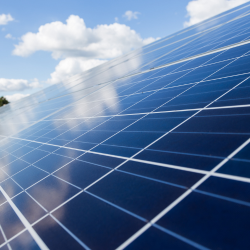 When it comes to choosing the right solar panel for your energy needs, it’s important to understand the different types available on the market.
When it comes to choosing the right solar panel for your energy needs, it’s important to understand the different types available on the market.
The two most common types of solar panels are monocrystalline and polycrystalline. Monocrystalline panels are made from a single crystal of silicon and are the most efficient type of panel, but also the most expensive. Polycrystalline panels are made from multiple silicon crystals and are less efficient, but more affordable.
Another type of solar panel gaining popularity is thin film. These panels are made by depositing a thin layer of photovoltaic material onto a surface, such as glass, plastic, or metal. Thin film panels are less efficient than crystalline panels, but are more affordable and flexible.
Silicon panels, on the other hand, are more rigid and stationary, making them better suited for residential or commercial use.
When deciding on the type of solar panel for your project, you’ll need to consider the balance between efficiency and affordability, as well as whether you need a portable or stationary panel.
For residential or commercial use, monocrystalline or polycrystalline panels are the best options. However, if you’re looking for a more affordable or portable option, thin film or flexible silicon panels may be a better choice.
Regardless of the type of panel you choose, it’s important to work with a professional solar installer to ensure a safe and efficient installation.
Professional Solar Installers
Hiring a professional solar installer ensures that your investment is protected with warranties, and provides you with peace of mind knowing that your solar energy system will be installed safely and efficiently. These experts can help you assess your solar needs, including equipment and battery systems, and can guide you through the process of obtaining any necessary permits or applications.
Additionally, NABCEP certification ensures that your installer has an intimate understanding of the process and can provide efficient and high-quality service. Professional solar installers can also help you find rebates and tax incentives, which can significantly lower your overall cost. They have a deep knowledge of utility company requirements and can help you navigate the process of connecting your system to the grid.
Most importantly, many equipment manufacturers only honor warranties if installed by a qualified installer, so working with a professional ensures that your equipment will be covered if anything goes wrong. While DIY solar may be a lower cost option for smaller applications, such as RVs and home battery backup, relying on professionals with technical know-how for costly electrical systems is highly recommended.
However, if you’re interested in learning more about the DIY process, a solar workshop can provide step-by-step guidance for your project.
DIY Solar Workshop
Attending a DIY solar workshop can be a great way to gain the knowledge and skills needed to successfully plan and execute a solar project on your own, all while saving money in the long run. These workshops can provide hands-on experience with DIY solar tools and solar panel kits, as well as project management tips to ensure a successful installation.
One important aspect of DIY solar workshops is learning about solar battery options. A solar battery can store excess energy generated by your solar panels, allowing you to use it during times when the panels are not producing enough energy. This is especially useful for off-grid solutions or for backup power during power outages.
While attending a DIY solar workshop can be a great way to gain knowledge and skills, it’s important to remember that there are still important steps to be taken before installation can begin. Site evaluation and permitting are crucial aspects of the planning process and should not be overlooked.
Stop relying on the Big Energy Companies and start producing your own energy with the DIY Home Energy system. It’s fast and easy to set up, and you’ll be up and running in just hours.
Create Your Own Clean Energy – The DIY Home Energy System
Site Evaluation and Permitting
Now that you’ve decided to take on a DIY solar panel project for your home, the next step is to evaluate your site and obtain the necessary permits.
Site assessment is important to determine if your property is suitable for solar panels. Factors such as shading, roof orientation, and roof pitch can affect the efficiency of your solar panels. It’s also important to consider any zoning restrictions or property ownership issues that may prevent you from installing solar panels.
Once you’ve assessed your site, you’ll need to obtain the necessary permits to install your solar panels. The permitting process can vary depending on your location, but generally involves submitting an application and paying a fee. You’ll also need to ensure that your solar panel system is in compliance with local building codes and utility interconnection requirements.
It’s important to work with your local building department and utility company to ensure that your solar panel system is properly installed and connected to the grid.
Navigating the permitting process for DIY solar panel installation can be challenging, but it’s an important step to ensure that your system is safe, reliable, and compliant with local regulations. With careful planning and coordination with local authorities, you can successfully obtain the permits needed to install your solar panel system.
Now that you have the necessary permits and site assessment, it’s time to move on to the next step of solar panel monitoring and maintenance.
Solar Panel Monitoring and Maintenance
Ensuring proper monitoring and maintenance of your solar energy system is crucial for maximizing its efficiency and protecting your investment. Here are some maintenance tips and troubleshooting techniques to help you keep your panel performance at its best:
- Regular Cleaning Techniques: Regular cleaning of your solar panels is important to remove any dirt, debris, or bird droppings that may accumulate on the surface. Use a soft cloth or sponge with a mild soap and water solution to clean the panels. Avoid using abrasive materials or harsh chemicals that may scratch or damage the surface.
- Monitoring Equipment: Monitoring equipment can help you keep track of your solar panel performance and detect any issues that may arise. You can use monitoring equipment to measure the amount of energy generated, the voltage, and current output of your solar panels. This can help you detect any problems early and take corrective action to prevent any damage.
- Troubleshooting Guide: A troubleshooting guide can help you identify and address any issues that may arise with your solar energy system. This can include issues with wiring, inverter, or battery. A troubleshooting guide can help you diagnose the problem and find the best solution to address it.
Now that you know some maintenance tips and troubleshooting techniques, you can ensure that your solar energy system is operating at peak performance.
In the next section, we’ll discuss solar panel design and how it can impact the efficiency of your solar energy system.
Solar Panel Design
 Ironically, the design of your solar panels can greatly impact the efficiency of your energy system. Solar panel sizing is a crucial step in determining the number of panels needed to meet your energy needs. This requires an assessment of your current energy usage and future goals.
Ironically, the design of your solar panels can greatly impact the efficiency of your energy system. Solar panel sizing is a crucial step in determining the number of panels needed to meet your energy needs. This requires an assessment of your current energy usage and future goals.
Panel orientation is another important factor to consider. Depending on your location, the direction your panels face can significantly impact energy production. Shading analysis is also important, as shading from trees or nearby buildings can cause a decrease in energy production.
Battery storage is another consideration, as it allows for energy to be stored and used during times of low production. When it comes to panel mounting options, there are two main choices: ground mount vs. roof mount. Ground mount systems allow for flexibility in placement and can be easier to maintain. Roof mount systems, on the other hand, can save space and be more aesthetically pleasing.
Ultimately, the design of your solar panels should be based on your energy needs, location, and personal preferences. Moving on to the next section about ground mount vs. roof mount, it’s important to understand the pros and cons of each option.
Save money and make your home energy independent with the DIY Home Energy system. It’s an easy to follow, step-by-step system that you can set up in just hours.
Be Energy Independent: Create Your Own Power with DIY Home Energy System!
Ground Mount vs. Roof Mount
Choosing between roof mount and ground mount for your solar panel installation is a critical decision that can impact your system’s performance, installation cost, and maintenance requirements. Roof mount is the most popular option as it doesn’t require extra space and can blend into your home’s design. However, it may not be suitable for all roofs, and shading or roof damage can affect the system’s efficiency.
Ground mount, on the other hand, offers more flexibility in terms of placement and orientation, and is easier to install and maintain. However, it requires extra space, and the construction of the mount can add to the installation cost.
If you decide to go for a DIY solar panel installation, keep in mind that roof mount requires more technical expertise, safety precautions, and proper flashing to prevent leaks. Whereas, ground mount requires more excavation work and proper anchoring to withstand wind and weather conditions. It’s recommended to consult with a professional installer, especially for a roof mount, to ensure that your system is installed correctly and safely. A professional installer can also provide maintenance tips and warranty coverage that DIY solar panel installation may not have.
Cost comparison between roof mount and ground mount depends on several factors like the size of the system, the type of mount, and the installation location. Generally, ground mount is more expensive than roof mount due to the additional materials and labor required. However, if your roof is not suitable for a solar panel installation or you need a larger system, ground mount may be a more practical and cost-effective option.
Moving on to the next topic of solar inverters, which plays a crucial role in converting the DC power generated by solar panels into usable AC power for your home.
Solar Inverters
When it comes to solar energy systems, inverters are like the brain, converting the energy captured by solar panels into usable power for your home or business. Here are some important things to consider about solar inverters:
- Solar inverter efficiency is crucial for maximizing your solar energy system’s performance. Look for inverters with a high efficiency rating to get the most out of your solar panels.
- There are two types of solar inverters: micro inverters and string inverters. Micro inverters are installed on each panel and convert the energy right at the source, while string inverters convert the energy from multiple panels at once. Micro inverters are more expensive but can increase efficiency and are better suited for off-grid systems.
- Battery storage options are available for solar energy systems, and inverters play a crucial role in managing the flow of energy between the batteries and the rest of the system. Consider your energy needs and budget when choosing an inverter and battery storage system.
- Inverter maintenance is important for avoiding unnecessary costs and ensuring the longevity of your system. Regular cleaning, inspection, and replacement of worn-out parts can help keep your solar energy system running smoothly.
Solar inverter efficiency, off-grid systems, and battery storage options are all important factors to consider when planning your DIY solar panel project. Once you’ve chosen your inverter, it’s time to think about solar tax incentives and rebates that can help reduce the cost of your system.
Solar Tax Incentives and Rebates
Now that you’ve learned about solar inverters, it’s time to explore the incentives and rebates available to you as a DIY solar panel installer.
Incentive eligibility and installation requirements can vary depending on your location, so it’s important to do your research before beginning your project. Many financing options are available to help make solar installation more affordable, including loans and leases.
When it comes to tax credits, there are limitations to consider. While the federal government offers a 30% investment tax credit, it’s set to decrease in the coming years. Additionally, not all states offer tax incentives for solar installation.
Despite these limitations, the energy savings potential of DIY solar panels can still make it a worthwhile investment.
If DIY solar installation doesn’t seem like the right fit for you, consider community solar as an alternative. This option allows you to benefit from solar energy without having to install panels on your own property. Instead, you can subscribe to a community solar project and receive credits on your energy bill.
This can be a great option for those who cannot install solar panels due to space or financial constraints.
Community Solar
Looking for a way to benefit from solar energy without installing panels on your property? Consider subscribing to a community solar project and receiving credits on your energy bill.
Community solar, also known as shared solar or solar gardens, allows multiple homeowners or businesses to purchase a share in a larger solar array located offsite. This means you can still reap the benefits of solar energy without the upfront costs or installation process.
Here are five reasons to consider community solar:
- You can support the growth of clean energy in your community and reduce your carbon footprint.
- Community solar allows you to benefit from solar energy even if your property isn’t suitable for installation.
- You can save money on your energy bills by receiving credits for the energy produced by your share in the solar array.
- Group purchasing power may result in lower costs for the energy produced.
- Community solar can have a positive impact on your local economy by creating jobs and supporting local businesses.
By subscribing to a community solar project, you can make a positive impact on your community and the environment while reaping the benefits of solar energy. And if you do decide to install solar panels on your property, there are even more benefits to consider.
Benefits of Going Solar
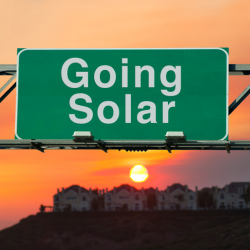 By switching to solar energy, you can significantly reduce your monthly electric bills and increase the value of your property. You can also reduce your environmental impact by decreasing your reliance on non-renewable energy sources. Solar panel financing options and tax incentives can make it even more affordable to make the switch.
By switching to solar energy, you can significantly reduce your monthly electric bills and increase the value of your property. You can also reduce your environmental impact by decreasing your reliance on non-renewable energy sources. Solar panel financing options and tax incentives can make it even more affordable to make the switch.
However, before you can start reaping the benefits of solar panel savings, you’ll need to go through the solar panel installation process. This involves designing a system that meets your energy needs, choosing the right equipment and components such as solar panels, batteries, and inverters, and obtaining the necessary permits and approvals.
Once your system is installed, solar panel maintenance is crucial to ensure optimal performance and longevity.
Overall, the benefits of going solar are numerous, but it’s important to carefully consider the costs and requirements of installation and maintenance. Whether you choose to DIY or hire a professional installer, it’s important to do your research and make informed decisions about your solar energy system.
In the next section, we’ll explore the solar panel installation process in more detail.
Solar Panel Installation Process
If you’re ready to switch to solar energy, let’s take a closer look at the process of installing a solar panel system.
The first step in installing a solar panel system is to determine the best placement for your panels. Factors such as the angle of your roof and the amount of sunlight your property receives will impact the effectiveness of your solar panels.
Once you’ve determined the best placement, you’ll need to install the panels and connect them to your home’s electrical system. This process involves wiring the panels together and connecting them to a solar battery. It’s important to ensure that all wiring is done safely and correctly, as improper wiring can lead to damage or even fire.
DIY solar tools can be helpful in the installation process, but it’s important to remember that installing a solar panel system is a complex and potentially dangerous task. It may be worth considering hiring a professional installer to ensure that your system is installed correctly and safely.
Additionally, a professional installer can help you choose the best solar battery options and provide guidance on maintaining your system for optimal performance.
Take charge of your home’s energy and save money with the DIY Home Energy system. It’s been tested and used successfully by 42,000 people from all over the world.
Start Saving Money Now: Get Your DIY Home Energy System Now!
Frequently Asked Questions
What are some common mistakes to avoid when installing DIY solar panels?
Common mistakes to avoid when installing DIY solar panels include wiring errors, inadequate ventilation, improper grounding, and overlooking permits. These mistakes can lead to dangerous situations and damage to the system. Always research and follow proper installation guidelines.
Can DIY solar panels be used to power an entire home or are they only effective for small projects?
DIY solar panel efficiency can vary, but it is possible to power a whole home with them. However, cost comparison and energy storage options should be considered. Professional installation offers benefits like warranties and proper assessment of equipment needs.
What factors should be considered when choosing between ground mount and roof mount racking for solar panels?
When choosing between ground mount and roof mount racking for solar panels, consider the cost comparison, panel orientation, installation difficulty, and weather considerations. Ground mount may be more expensive, but offers flexibility in panel orientation and easier installation. Roof mount may be more affordable, but requires a sturdy and well-oriented roof and may be affected by weather conditions.
Are there any legal restrictions on DIY solar panel installation in certain areas?
Installing solar panels requires compliance with permit requirements, zoning regulations, and installation codes. Homeowner association restrictions and legal liabilities may also apply. It’s important to research and understand these factors before beginning any installation project.
What are some common maintenance tasks that need to be performed on solar panels to maximize efficiency and avoid unnecessary costs?
To maximize solar panel efficiency and avoid unnecessary costs, regular cleaning techniques are necessary, along with checking and tightening wiring connections. Weather protection, such as covers, and proper panel orientation can also help. Consider storage solutions for excess energy.
Conclusion
Congratulations, you’ve made the decision to go solar and install DIY solar panels on your home! By taking this step, you’re not only saving money but also contributing to a cleaner, more sustainable future.
As you embark on this journey, remember to keep in mind the pros and cons of DIY solar panels, the types of solar panels available, and the potential savings through tax incentives and rebates.
Picture yourself standing on your roof, hands-on and in control of the installation process. With each panel you place, you feel a sense of satisfaction knowing that you’re playing an active role in reducing your carbon footprint.
As you complete the project, you can sit back and relax, enjoying the benefits of your hard work. Your energy bills decrease, and you have peace of mind knowing that your home is powered by renewable energy.
In conclusion, DIY solar panels may be the perfect solution for those who have the expertise and tools to install them. With careful planning and research, you can join the growing number of homeowners who are taking advantage of the benefits of solar energy.
So why wait? Get started on your DIY solar panel installation and take the first step towards a brighter future. Unlock your home’s energy potential – Break free from big energy companies!
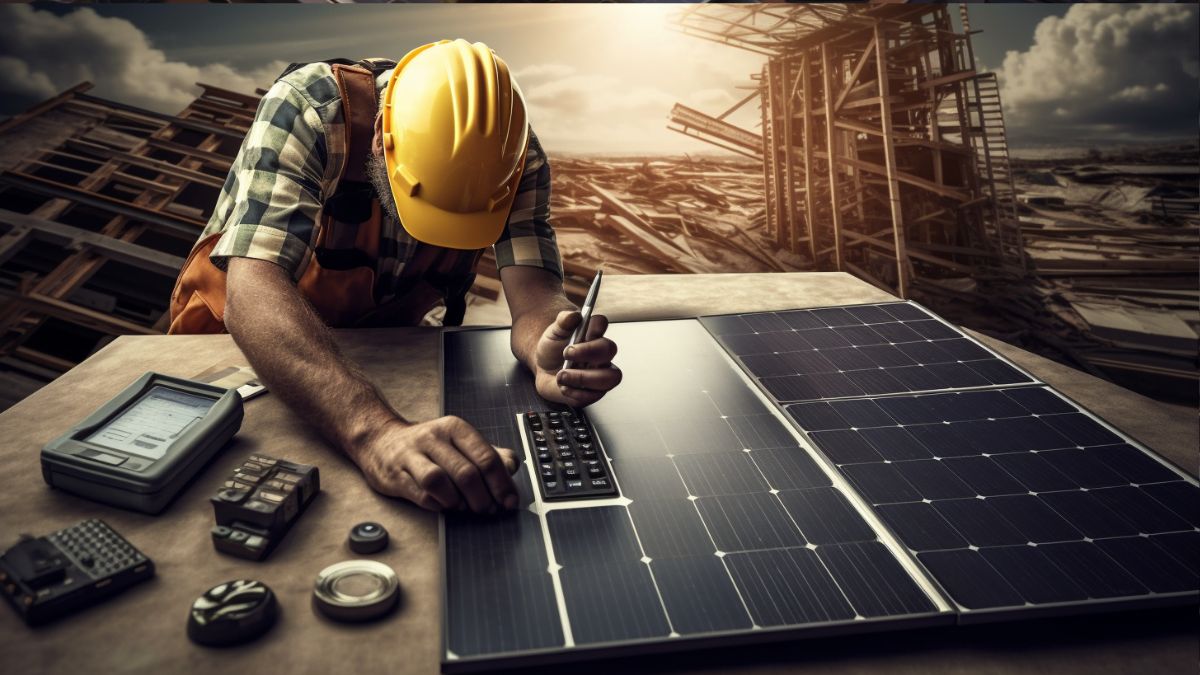

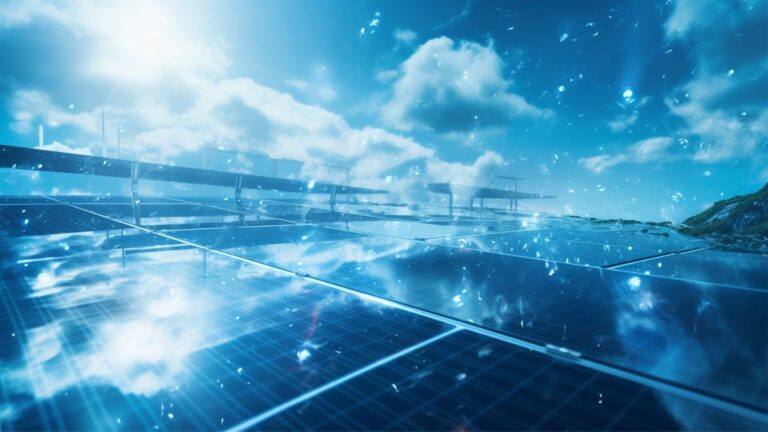

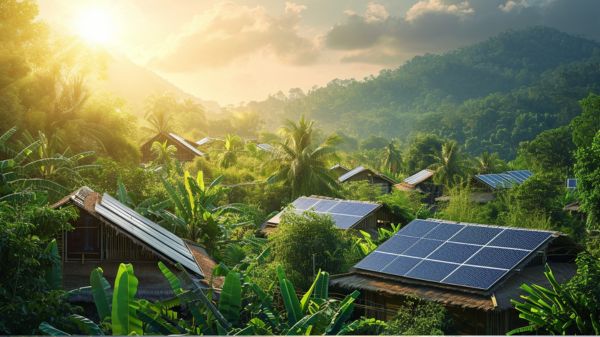

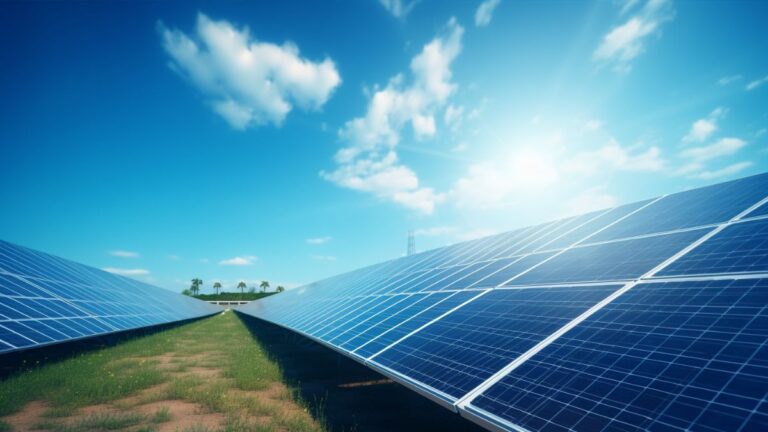
One Comment
Comments are closed.